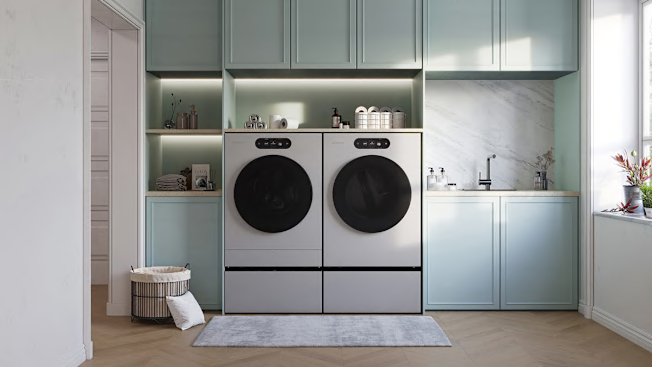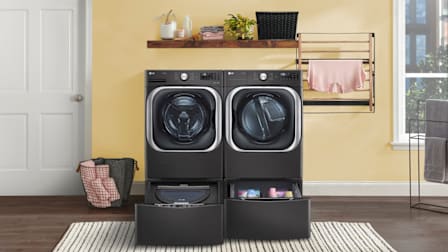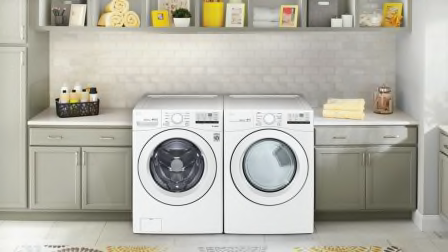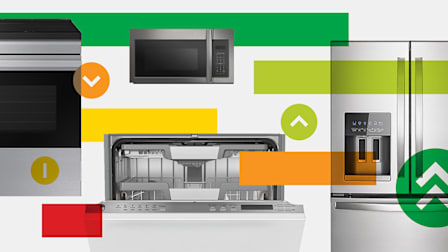Best Large-Capacity Washing Machines of 2025
Choosing a bigger front-loader, HE top-loader, or agitator top-loader will help you get large loads cleaner
When you shop through retailer links on our site, we may earn affiliate commissions. 100% of the fees we collect are used to support our nonprofit mission. Learn more.

We’ve all jammed piles of clothes into our washing machines in an effort to get through mountains of laundry. But instead of overburdening a smaller machine, why not opt for a large-capacity washer—with at least 5 cubic feet?
There are dozens of large-capacity washers in Consumer Reports’ washing machine ratings. Some of them are even relatively cost-conscious despite their roomier insides. Purchasing a bigger washing machine can help prevent tangled clothes, detergent-laden fabric, and damaged mechanisms that unleash an off-balance rumble in your laundry room.
- Best Large-Capacity Washers: Front-Loaders HE Top-Loaders Agitator Top-Loaders
- What Else to Know About Large-Capacity Washers
- How CR Tests Washers
Best Large-Capacity Front-Loaders
Front-load washing machines have some of the largest tub sizes, a natural byproduct of their laundromat-style drums that lift and drop clothes repeatedly into sudsy water. These large-capacity front-loaders offer 5 to 5.8 cubic feet of storage space.
Best Large-Capacity HE Top-Loaders
Typically, top-load HE washing machines are more spacious than those with agitators, but sometimes they can tangle up clothes for a less efficient clean. Still, if you launder big loads, HE top-loaders are a good compromise on price, size, and efficiency. These large-capacity HE top-loaders offer 5 to 5.5 cubic feet of storage space.
Best Large-Capacity Agitator Top-Loaders
Large capacities aren’t as typical in agitator top-loaders as in front-loaders or HE top-loaders. But a little more room can help offset the space restrictions resulting from the center spindle. The following agitators offer 5.1 to 5.4 cubic feet of storage space, which should be large enough to handle any laundry load.
What Else to Know About Large-Capacity Washing Machines
Figuring out the ideal washing machine capacity goes beyond the advertised capacity. Some washer types make more efficient use of the space than others, for example, and the tub size can affect their physical footprint. Below, we detail a few considerations you should keep in mind as you’re shopping around for a large-capacity washer.
Machine types: Agitator top-loaders typically have the smallest tub capacities (as little as 3.2 cubic feet for a Speed Queen in our ratings). But some manufacturers now offer agitator top-loaders that have capacities of 5 cubic feet or more. Still, the vertical spindle takes up some of that room. Capacities for HE (high-efficiency) top-loaders (the type powered by an impeller) and front-loaders range from 3.5 to 5.8 cubic feet. Check owner’s manuals for guidance on load sizes so that you can avoid overstuffing a machine or using too much detergent.
Comforters: Instead of lugging your king-sized comforter to a laundromat, you can wash it in any washer with a claimed capacity of at least 4.5 cubic feet, although the more room, the better. Wash comforters by themselves for better agitation and rinsing. An extra rinse cycle might also be helpful for these bulky items. Upon removing your comforter from the dryer, air-drying for an additional hour or two is a good idea.
Small loads: All the front-loaders and HE top-loaders in our washing machine ratings have a sensor that adjusts the amount of water based on the weight of the load. Most agitator washers do, too. So, yes, you can wash any size load in a large washer.
Washer vs. dryer capacity: Matching washer and dryer sets remain popular, and when shopping you’ll notice that the claimed capacity of the two machines is different—the dryer’s is larger (with capacities from 6 to 9 cubic feet or more). Clothes expand as they dry and need the added space to tumble around.
Ease of use: Large-capacity washers have practical implications; the depth of the tub might not work for everyone. “There are only a few ways manufacturers can increase capacity,” Handel says. “You make the tub either deeper or wider—or both.” When you’re shopping, Handel suggests reaching all the way in to make sure you can pick up laundry from the bottom.
Space: High-capacity washers might be wider than the standard 27 inches, so factor that in as you measure dimensions before choosing a model. Allow at least 6 inches behind the washer for plumbing hookups, and about an inch between the washer and dryer. Also, measure your home’s doors and hallways en route to the laundry room to make sure that a new machine will fit through them. You’ll see model dimensions noted in our washing machine ratings.
How CR Tests Washers
To evaluate how good a washing machine is at cleaning clothes, CR’s testers use fabric swatches stained with red wine, cocoa, carbon (which is similar to soot), and other hard-to-remove stains. They analyze each swatch with a spectrocolorimeter before and after washing. The lighter the stain after laundering, the higher the machine scores in washing performance.
We also evaluate how gentle a washer is on fabric and record the amount of water and energy each machine uses. And we record the energy needed to dry the laundry we just washed. Washers that extract more water shorten dryer time and score higher in our energy-efficiency tests. Water- and energy-efficiency scores are among the factors we use to determine the Green Choice designation for washers.
Our testers also measure how much vibration the washer transmits to a wood floor, and our panelists judge the washer’s noise levels during the fill, agitate/tumble, drain, and spin cycles.
































